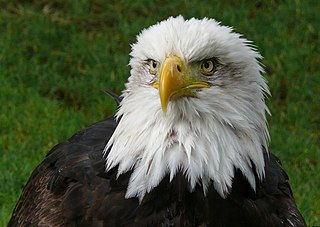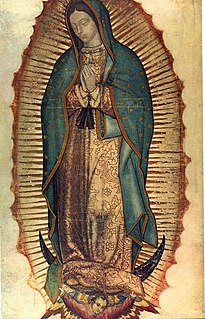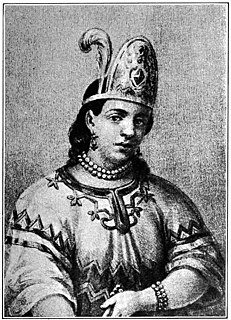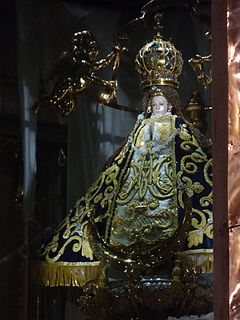 W
WThe national symbols of Mexico are the flag, the coat of arms and the anthem. The flag is a vertical tricolor of green, white, and red. The coat of arms features a golden eagle eating a snake on top of a cactus.
 W
WThe Angel of Independence, most commonly known by the shortened name El Ángel and officially known as Monumento a la Independencia, is a victory column on a roundabout on the major thoroughfare of Paseo de la Reforma in downtown Mexico City.
 W
WA charro is a traditional horseman from Mexico, originating in the central regions primarily in the states of Jalisco, Michoacán, Nayarit, Colima, Zacatecas, Durango, Chihuahua, Aguascalientes, Querétaro, and Guanajuato. The vaquero and ranchero are similar to the charro but different in culture, etiquette, mannerism, clothing, tradition and social status. The inhabitants of southern Salamanca, the province of Spain, are also called "charros". Among these, the inhabitants of the regions of Alba de Tormes, Vitigudino, Ciudad Rodrigo and Ledesma are specifically known for their traditional "ganadería" heritage and colorful glitzy clothing.
 W
WThe coat of arms of Mexico depicts a Mexican (golden) eagle perched on a prickly pear cactus devouring a rattlesnake. The design is rooted in the legend that the Aztec people would know where to build their city once they saw an eagle eating a snake on top of a lake. The image has been an important symbol of Mexican politics and culture for centuries. To the people of Tenochtitlan, this symbol had strong religious connotations, and to the Europeans, it came to symbolize the triumph of good over evil.
 W
WThe Monument to Cuauhtémoc is an 1887 monument dedicated to the last Mexica ruler (tlatoani) of Tenochtitlan Cuauhtémoc, located at the intersection of Avenida de los Insurgentes and Paseo de la Reforma in Mexico City. It is the work of Francisco Jiménez and Miguel Noreña in the "neoindigenismo", and was proposed to promote the new government of Porfirio Diaz.
 W
WDahlia is a genus of bushy, tuberous, herbaceous perennial plants native to Mexico and Central America. A member of the Compositae family of dicotyledonous plants, its garden relatives thus include the sunflower, daisy, chrysanthemum, and zinnia. There are 42 species of dahlia, with hybrids commonly grown as garden plants. Flower forms are variable, with one head per stem; these can be as small as 5 cm (2 in) diameter or up to 30 cm (1 ft). This great variety results from dahlias being octoploids—that is, they have eight sets of homologous chromosomes, whereas most plants have only two. In addition, dahlias also contain many transposons—genetic pieces that move from place to place upon an allele—which contributes to their manifesting such great diversity.
 W
WEagle is the common name for many large birds of prey of the family Accipitridae. Eagles belong to several groups of genera, some of which are closely related. Most of the 60 species of eagle are from Eurasia and Africa. Outside this area, just 14 species can be found—2 in North America, 9 in Central and South America, and 3 in Australia.
 W
WThe golden eagle is a bird of prey living in the Northern Hemisphere. It is the most widely distributed species of eagle. Like all eagles, it belongs to the family Accipitridae. They are one of the best-known birds of prey in the Northern Hemisphere. These birds are dark brown, with lighter golden-brown plumage on their napes. Immature eagles of this species typically have white on the tail and often have white markings on the wings. Golden eagles use their agility and speed combined with powerful feet and massive, sharp talons to snatch up a variety of prey, mainly hares, rabbits, and marmots and other ground squirrels. Golden eagles maintain home ranges or territories that may be as large as 200 km2 (77 sq mi). They build large nests in cliffs and other high places to which they may return for several breeding years. Most breeding activities take place in the spring; they are monogamous and may remain together for several years or possibly for life. Females lay up to four eggs, and then incubate them for six weeks. Typically, one or two young survive to fledge in about three months. These juvenile golden eagles usually attain full independence in the fall, after which they wander widely until establishing a territory for themselves in four to five years.
 W
WPrincess Eréndira of the Purépecha was the princess of the Purépecha from about 1503–1519.
 W
WThe flag of Mexico is a vertical tricolor of green, white, and red with the national coat of arms charged in the center of the white stripe. While the meaning of the colors has changed over time, these three colors were adopted by Mexico following independence from Spain during the country's War of Independence, and subsequent First Mexican Empire. The form of the coat of arms was most recently revised in 1968, but the overall design has been used since 1821, when the First National Flag was created.
 W
WOur Lady of Guadalupe, also known as the Virgin of Guadalupe, is a Catholic title of Mary, mother of Jesus associated with a series of five Marian apparitions in December 1531, and a venerated image on a cloak enshrined within the Basilica of Our Lady of Guadalupe in Mexico City. The basilica is the most-visited Catholic shrine in the world, and the world's third most-visited sacred site.
 W
WThe Imperial Crown of Mexico was the crown created for the Emperor of Mexico on two occasions.
 W
WJarabe tapatío, often referred to as the Mexican hat dance, is the national dance of Mexico. It originated as a courtship dance in Guadalajara, Jalisco, during the 19th century, although its elements can be traced back to the Spanish zambra and jabber gitano, which were popular during the times of the viceroyalty. Female dancers traditionally wear a china poblana outfit, while the male dancers dress as charros.
 W
WA lienzo charro is an arena where charros hold the events of charreada, coleadero and jaripeo. American rodeo events may also take place at a lienzo charro.
 W
WMarina [maˈɾina] or Malintzin [maˈlintsin], more popularly known as La Malinche [la maˈlintʃe], was a Nahua woman from the Mexican Gulf Coast known for contributing to the Spanish conquest of the Aztec Empire, by acting as an interpreter, advisor, and intermediary for the Spanish conquistador Hernán Cortés. She was one of 20 enslaved women given to the Spaniards in 1519 by the natives of Tabasco. Cortés chose her as a consort, and she later gave birth to his first son, Martín. He is known as one of the first Mestizos.
 W
WMariachi is a genre of regional Mexican music that dates back to at least the 18th century, evolving over time in the countryside of various regions of western Mexico. The usual mariachi group today consists of as many as eight violins, two trumpets and at least one guitar, including a high-pitched vihuela and an acoustic bass guitar called a guitarrón, and all players taking turns singing lead and doing backup vocals.
 W
WThe "Mexican National Anthem", also known by its incipit "Mexicans, at the cry of war", is the national anthem of Mexico. The anthem was first used in 1854. The lyrics of the national anthem, which allude to historical Mexican military victories in the heat of battle and including cries of defending the homeland, were composed by poet Francisco González Bocanegra after a Federal contest in 1853. Later, in 1854, he asked Jaime Nunó to compose the music which now accompanies González's poem. The national anthem, consisting of ten stanzas and a chorus, effectively entered into use on September 16, 1854.
 W
WMexico City Texcoco Airport is a partially built facility intended to be Mexico City's New International Airport. The project was cancelled in late 2018.
 W
WPopocatépetl and Iztaccíhuatl refers to the volcanoes Popocatépetl and Iztaccíhuatl in Izta-Popo Zoquiapan National Park, which overlook the Valley of Mexico and the various myths explaining their existence. The most common variety relates the Nahua romance of the princess Iztaccíhuatl and the warrior Popocatépetl. This tale is recorded in several different versions.
 W
WOur Lady of San Juan de los Lagos is a Roman Catholic title of the Blessed Virgin Mary venerated by Mexican and Texan faithful. The original image is a popular focus for pilgrims and is located in the state of Jalisco, in central Mexico, 122 kilometers (76 mi) northeast of the city of Guadalajara. The statue is venerated both in Mexico and in the United States where it is known by its proxy title Nuestra Señora de San Juan del Valle, mainly focused in Texas.
 W
WTaxodium mucronatum, commonly known as Montezuma bald cypress, Montezuma cypress, or ahuehuete, is a species of Taxodium that is native to Mexico and Guatemala. Ahuehuete is derived from the Nahuatl name for the tree, āhuēhuētl, which means "upright drum in water" or "old man of the water."